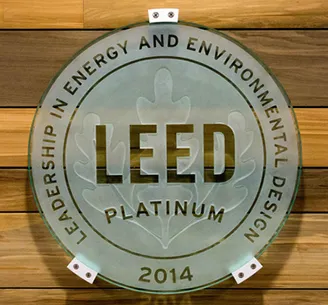LEED 2009 Registration Extended to October 2016

The U.S. Green Building Council (USGBC) has decided that requiring new LEED projects to register for LEED v4 as of June 2015 was too soon and has shifted that date back to October 31, 2016. In an announcement released this morning, USGBC said that it was giving the market more time to get ready for LEED v4 based on feedback it received during last week's annual Greenbuild conference.
According to USGBC, 61% of respondents to a survey said they are “not ready” or “unsure” if they are ready for LEED v4 and require additional time to prepare.
USGBC launched LEED v4 in November 2013 as a more rigorous and fresh take on the LEED green building rating system, including new concepts like product transparency, whole building life-cycle analysis, and newer energy standards. The package came with a cushion: leading-edge LEED projects could register for LEED v4 right away, but you could keep registering for LEED 2009 until the window closed in June 2015. Want to play it safe? Register your project now for LEED 2009; upgrade to LEED v4 later when the kinks are worked out.
As of earlier this month, nine LEED v4 projects had been certified (one of which has shared its full documentation with LEEDuser), and 304 had started the process by registering during 2014. That's 15 times fewer than the 4,493 LEED 2009 projects registered to date. Between those numbers, the Greenbuild survey, and other market feedback, USGBC apparently decided it had heard enough and extended the LEED 2009 window another 16 months.
In a press release, Rick Fedrizzi, CEO of USGBC, said, “When USGBC launched LEED v4 last year, we set out with one goal in mind—to raise the bar in a way that challenges the building industry to reach higher than ever before. This is our nature and USGBC and its members’ collective mission. However, the market has requested additional time to prepare for LEED v4, so we are responding. “
Fedrizzi added, "Our international LEED users, which account for some 50% of new LEED registrations, have also indicated they would like to have more time to move onto the new rating system. This extension will be especially helpful to them.”
The LEED v4 Materials and Resources (MR) credits have caused the most angst for LEED users, with many raising questions about whether the new Building Product Disclosure and Optimization credits are too complicated, not workable, or simply not a good idea.
That credit might get an overhaul. Also at Greenbuild last week, USGBC announced a Supply Chain Optimization Working Group, the charter of which is not confined to the vague Option 3 of Building product disclosure and optimization—material ingredients; it's also tasked with "explor[ing] new and innovative ideas to evolve" all three options of that credit, which includes a variety of programs. (Nadav Malin, president of BuildingGreen, which publishes LEEDuser, has been tasked with facilitating the working group, working with Scot Horst, chief product officer at USGBC.)
USGBC and the Green Building Certification Institute (GBCI) have not announced whether the change will impact credentialing, which switched over earlier this year to LEED v4 based exams for LEED Green Associates and LEED Accredited Professionals (LEED APs). Our guess is that there will not be a change here.
Mara Baum, vice president and sustainable design leader for healthcare at HOK, reacted positively to the news. She told LEEDuser, "This will help ease the transition to a very different and challenging system for design practitioners, owners, and manufacturers alike. Progressive organizations will continue their shift towards v4 criteria, while others can continue to advance their projects with v2009. USGBC will continue to develop incentives to encourage teams to either switch to v4 or to substitute v4 credit language where appropriate."
Referring to the 18-month cushion included in the LEED v4 launch, Baum noted, "This is the second time that required registration for v4 has been delayed. The first delay allowed USGBC to put more effort into fine-tuning tools such as the online LEED credit library and Web-based reference guide. Ironically the LEED tools are more advanced at this point than they had been at the release of 2009—it’s the market that isn’t ready yet. The roll out of LEED v4 would have been particularly challenging in jurisdictions that require certification for all buildings, or all buildings of a certain size and/or typology."
What's your reaction to the extension of LEED 2009?
